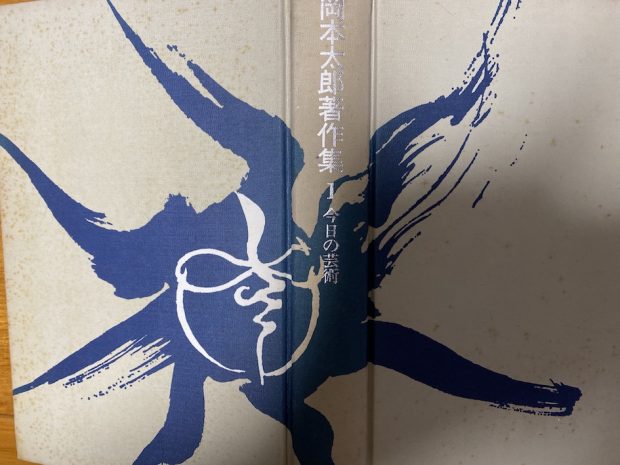<縄文>岡本太郎&勅使河原蒼風

勅使河原蒼風と縄文を探っていくと岡本太郎に繋がっていく のです。太郎の縄文との起点は1952年2東京国立博物館ですが、蒼風の縄文発掘とどちらが先でしょうか?私はそこに興味が惹かれるのです。当時、縄文土器に対しては発掘物であって文化財や art としての認識はなかった時代です。太郎のあの眼光により縄文は、縄文文化は蘇ったのです。これこそ真の発掘ではないでしょうか?蒼風は太郎の「夜の会」などで交流していました。又、太郎は雑誌『草月』での座談会で、はじめて縄文土器について熱く発言し ているのです。どちらにしてもこの偉大なるartの開拓者二人の出会いは日本の戦後美術を豊穣にしたことは事理明白でしょう 。
私は<縄文>のキーワードで久しぶりに岡本太郎の著書のページを繰りました。そして、あの強烈なキャラの目潰しで太郎の表層しか認識していなかったことを気づかされました。彼ほど明晰な知性と深淵な精神の持ち主はいないでしょう。真の天才だと改めて知らされたのです。
岡本太郎「今日の芸術」 1979 年より特に印象に残ったことを索引します。
<日本文化の特殊性>文化の復路小路
「この文化の系列はおおざっぱに言えば、室町時代にはじまり、徳川三百年の封建制と鎖国によって固定したものだと言えます。・・・以前の奈良、平安時代の文化とも質がちがってます。・・・この近世のかたよった流れは、日本の文化を歪め、不毛にしている悪い条件の研究材料として、冷静に観察する必要があると思うのです。」
〜日本を遠く離れたパリに身を置き民族学を深く学んだ太郎だからこそ日本の歴史を俯瞰できた根幹的な見識だと思います。
「日本は大陸とあれほど接していながら、ついに大陸文化の全量、その本質的な規模の大きさをほんとうに理解することができなかった。・・・日本と中国の距離というものは、ヨーロッパとの距離とほとんどひとしいくらい、あるいはさらに遠くへだたっているようにさえ思えます。」
〜留学したことと、中国大陸で戦役で五年もの過酷な体験から滲み出た深い洞察に面を取られた思いがしました。
<芸術と芸ごと>芸術と芸というものを、はっきり区別しなければいけない、芸術は創造です。同じことを決してくりかえしてはいけない。芸はふるい型を受けつぎみがいていくものです。
<原始的黒人芸術>徹底的にリファインされた文化は、かえって粗野な原始的なものによって新鮮な生命力を注入されなければ、実態が希薄になっていくのではないでしょうか。
<アバンギャルド芸術>われわれの精神には洗練された知性と同時に、強烈な盲目的本能がひそんでいます。芸術には二つのモメントが不可欠な要素なのです。これを共に激しく生かし、闘わせることが新しい芸術の課題であり、また在り方であると思います。
〜ひとつひとつの言葉は art の端くれに繋がる者として常に反芻すべきです、時代は変ろうとも。
